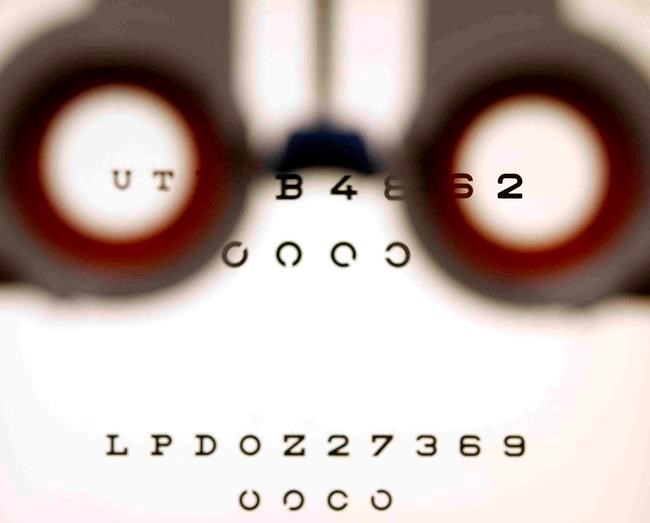TORONTO — Ontario Health Minister Sylvia Jones is defending a move to reduce the frequency of eye exams for healthy seniors, saying Monday that changes to funding for optometry services involve "fine tuning" the coverage.
Jones announced Friday that the government had reached a funding agreement with optometrists that increases some payments to them - though she has not detailed those increases - but it also cuts some coverage for patients.
As of Sept. 1, people aged 65 and older will be covered for one eye exam every 18 months, instead of one a year, unless they have a condition affecting their eyes such as macular degeneration, glaucoma or diabetes.
The Opposition NDP pressed Jones in question period Monday on the reasons for the move, and she said the deal also expands access to coverage for people with certain conditions.
"The new funding agreement will actually increase care for people with chronic diseases such as glaucoma and ocular complications due to diabetes," she said.
"(We are) saying, 'Where are those investments and where do those pieces need to be?” Is it a healthy 65-year-old who has no eye issues or is it that young patient who has diabetes, that senior who has glaucoma?'"
She framed the agreement as giving better care to people who need it most, saying "if you have issues related to your eyes, you have better access now in the province of Ontario."
"There's some expansion and some fine tuning to make sure that the services that we are providing, that optometrists are providing, are going to the most appropriate patients," Jones said after question period.
But the changes under the agreement detailed in the province's news release are largely reductions in coverage, not expansions.
Josephine Pepe, president of the Ontario Association of Optometrists, said the aim of the agreement was to increase access to care for patients.
"We want to make sure that the patients that need to care the most are getting it and this is what this does," she said in an interview.
Optometrists withdrew from performing provincially insured eye services from September to November 2021 amid a dispute over the amount they were being reimbursed for eye exams.
They said at the time that the province was underfunding OHIP-covered eye exams, leaving them paying almost half the costs out of pocket. Then-health minister Christine Elliott said the government would pay $39 million in retroactive costs and was prepared to increase reimbursement by 8.48 per cent going forward, though the optometrists said that would still fall short of what was needed.
Neither Jones nor the association would say Monday how much this agreement increases optometrist reimbursement, but Pepe said the overall increase is "similar."
"What it's done is it's redirected and redistributed things in a way that makes more sense," she said.
When asked to clarify how the agreement increases care such as for people with glaucoma, a spokesperson said there is now "increased funding allocated for glaucoma management which translates into increased access to care."
Under the agreement, seniors will no longer be able to receive unlimited minor follow-up assessments after an annual eye exam. Instead, they would be able to get two of those assessments every 18 months, or 12 months for seniors with certain medical conditions affecting their eyes.
Adults between age 20 and 64 with lazy eye will no longer be covered for eye exams. People in that age range with strabismus - who are currently covered for eye exams - will now only be able to receive them through OHIP if the condition has a sudden onset.
People with cataracts are currently covered for eye exams, but starting Sept. 1 they will only be covered if they have "clinically significant decreased vision that impacts their daily life" or if a surgery referral is made.
People with retinal disease, corneal disease and optic pathway disease will only be covered if their cases are active, as opposed to being insured for an eye exam at any time.
Currently, any OHIP patient is covered for a visual field assessment, but going forward only people with certain conditions such as retinal disease, glaucoma, active optic pathway disease, and acquired cranial nerve palsy causing strabismus will be covered for them.
For patients with diabetes, a documented history of the disease is currently required in order for the patient to receive an OHIP-insured eye exam, but as of Sept. 1 optometrists can make a clinical assessment themselves.
Right now, people with inflammation known as uveitis can receive an insured eye exam if they have the condition on a recurring basis, whether the eye is inflamed or not at the moment. Starting Sept. 1, uveitis no longer has to be a recurring condition for the patient to qualify, but people will only be covered with current inflammation.
This report by The Canadian Press was first published March 27, 2023.
The Canadian Press

